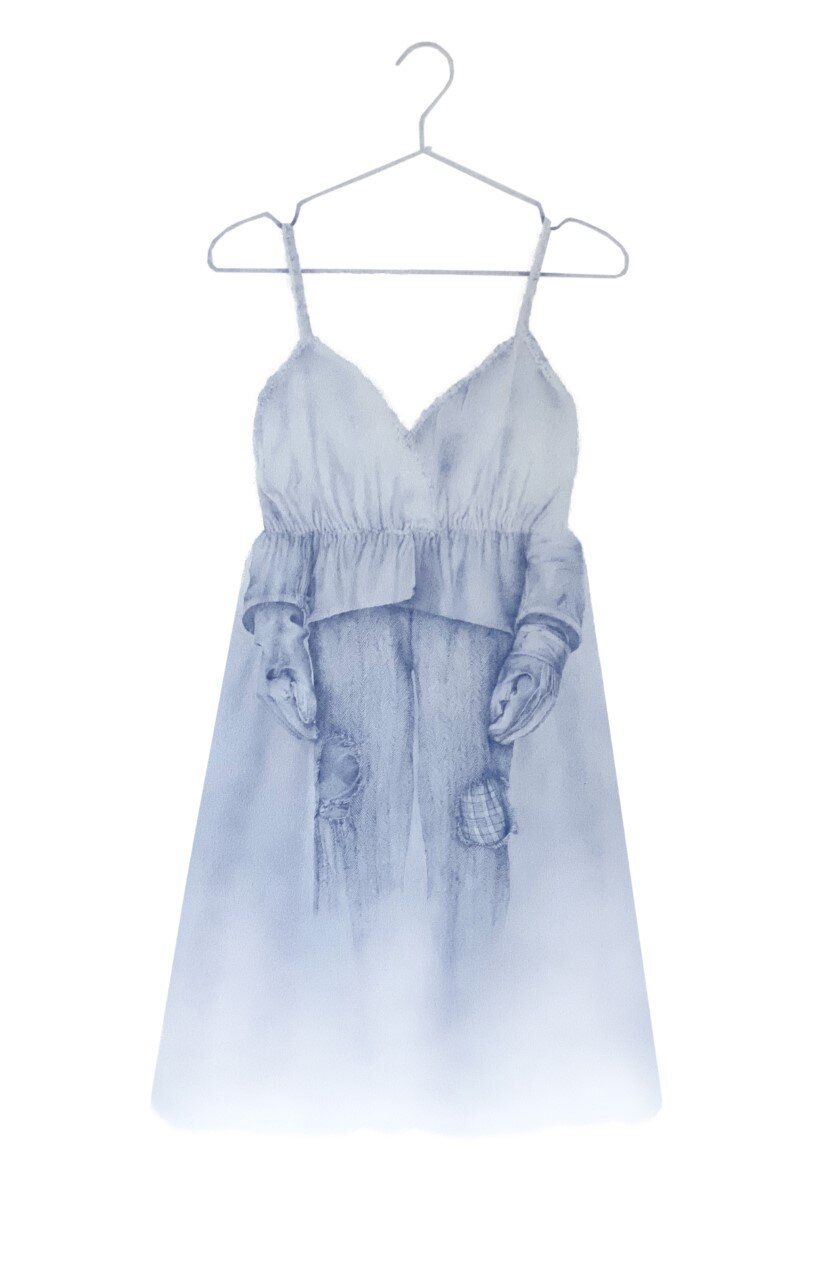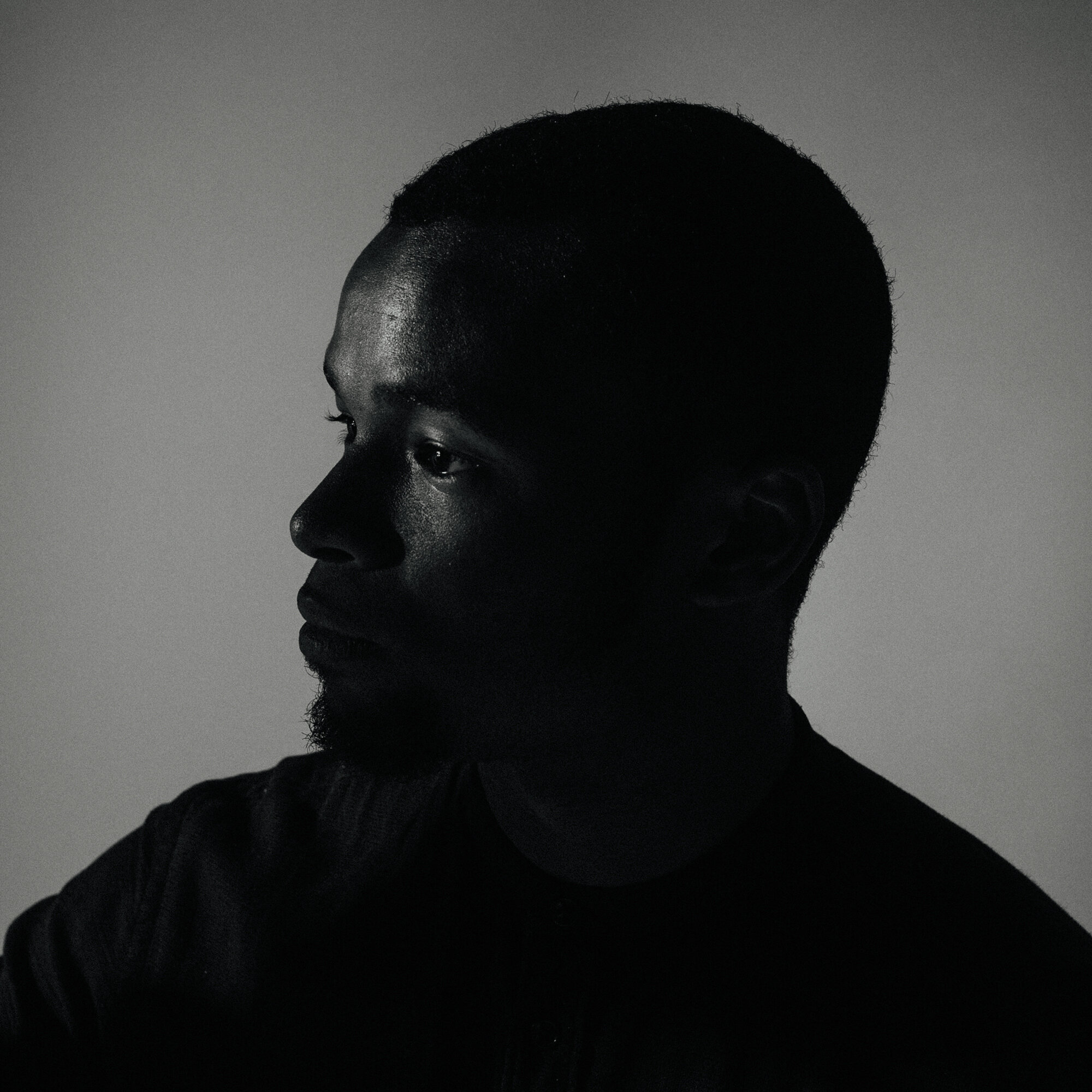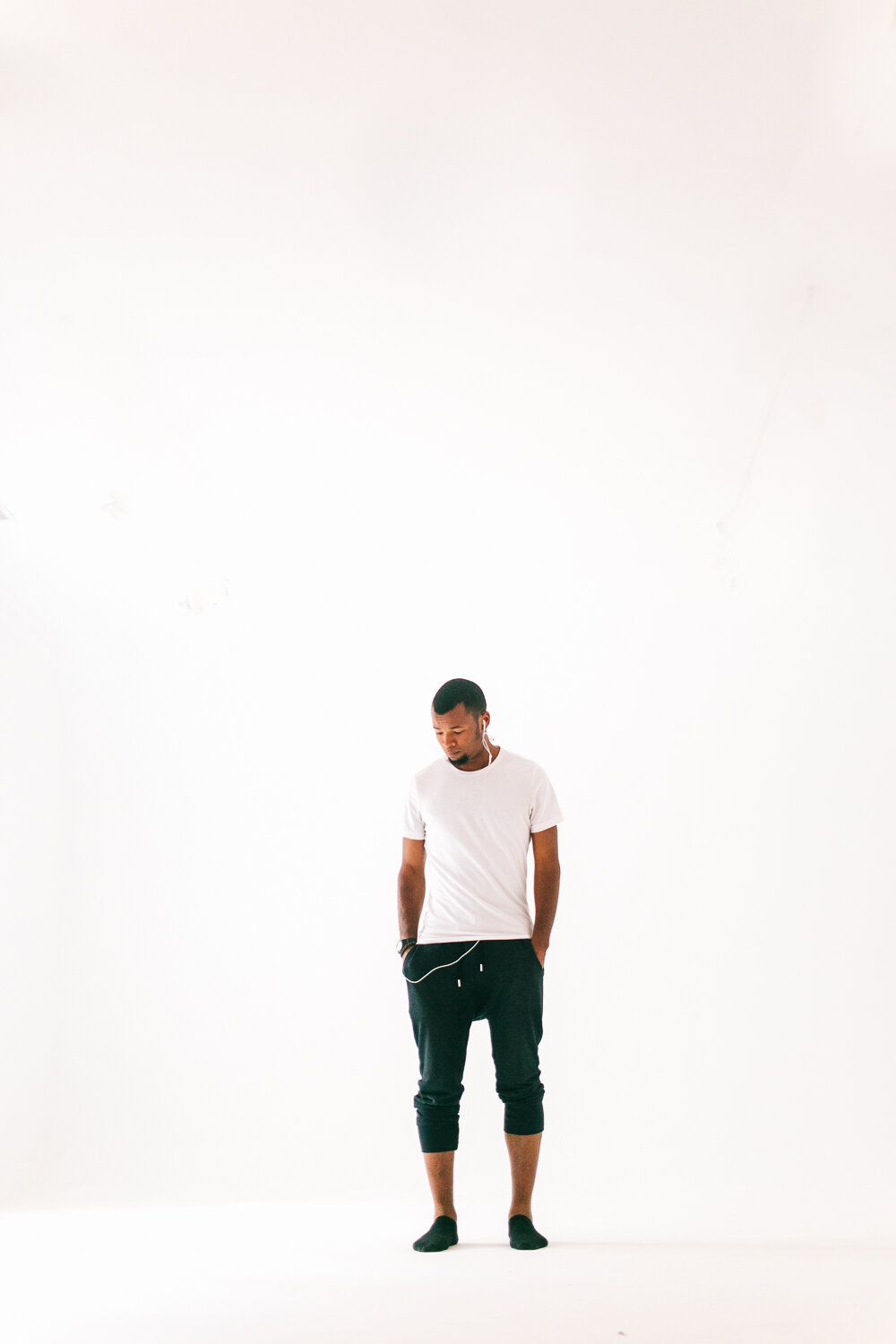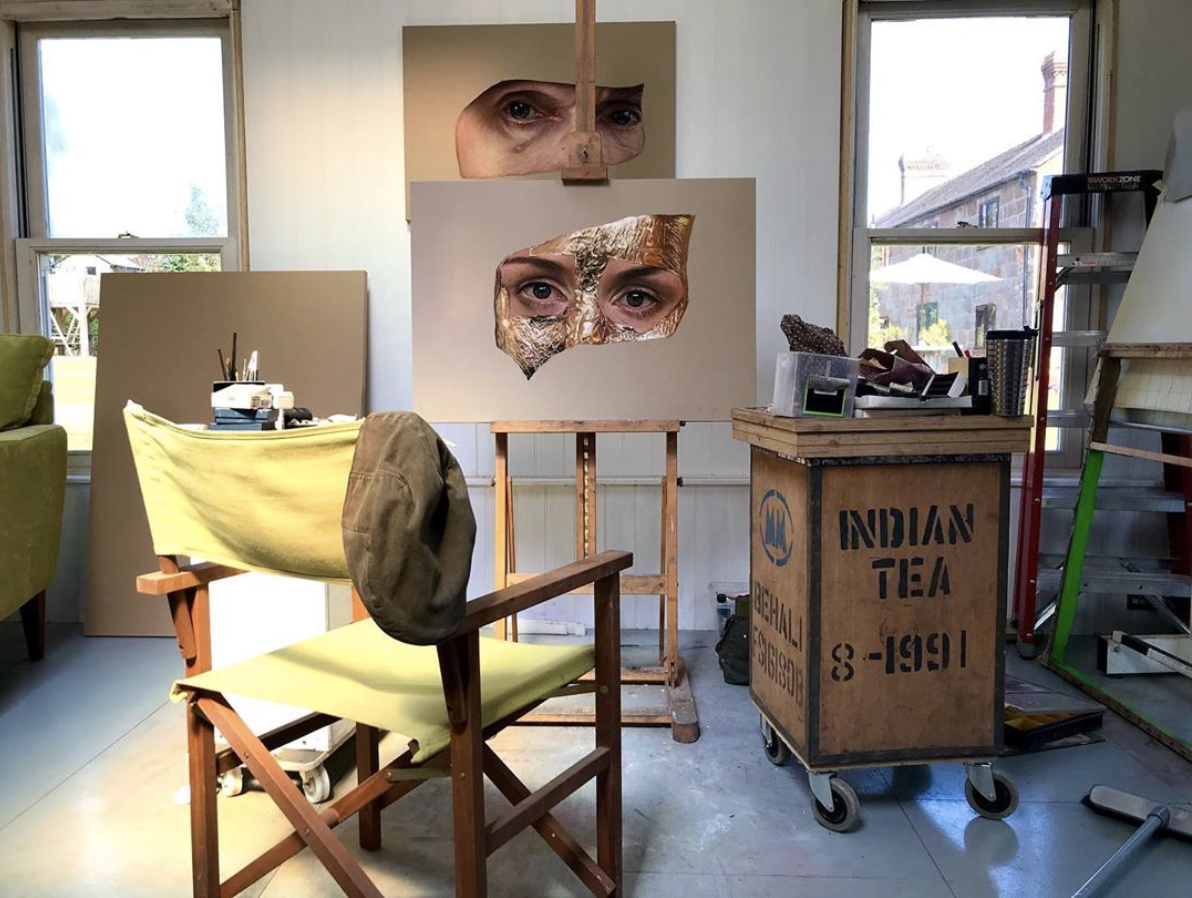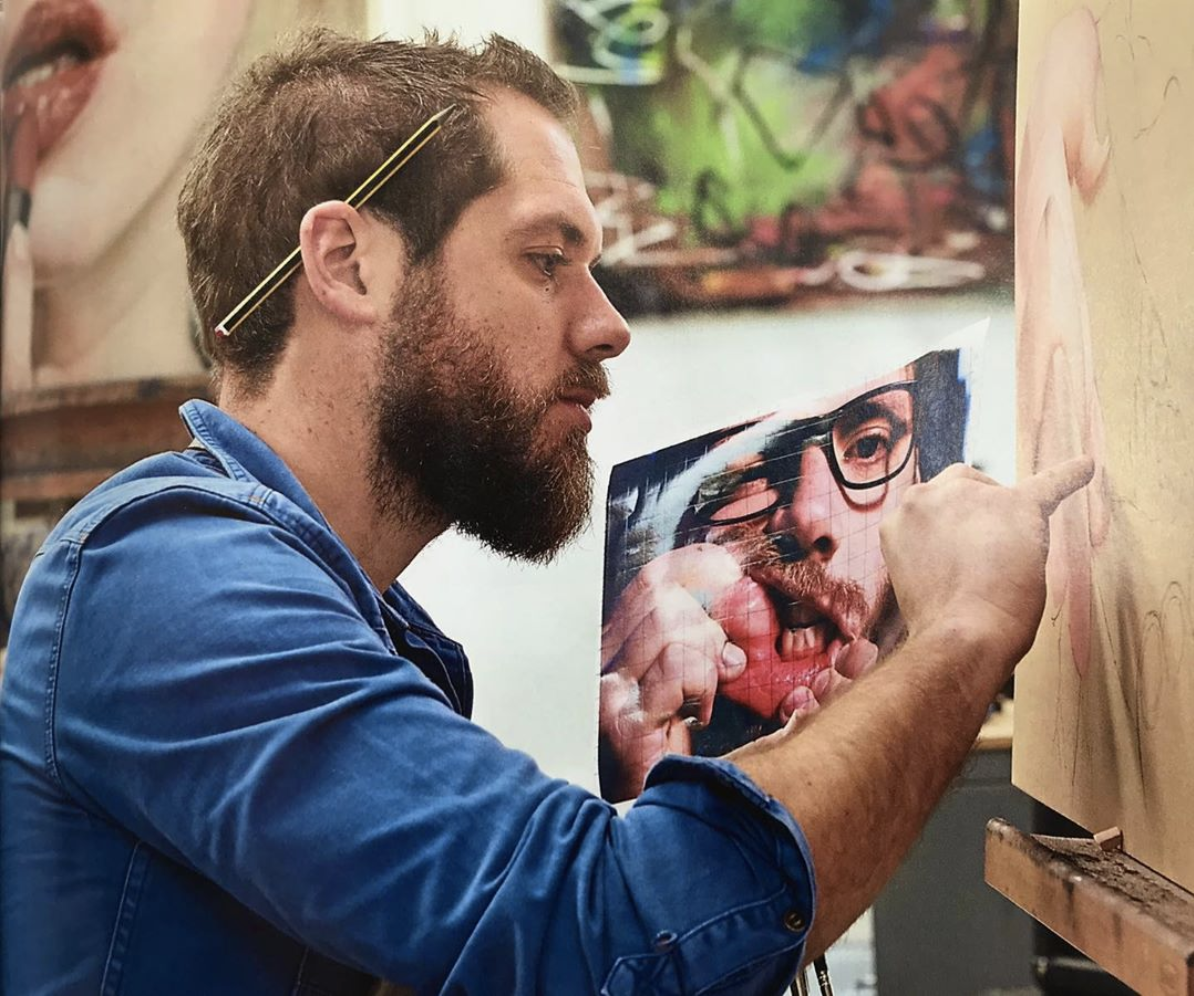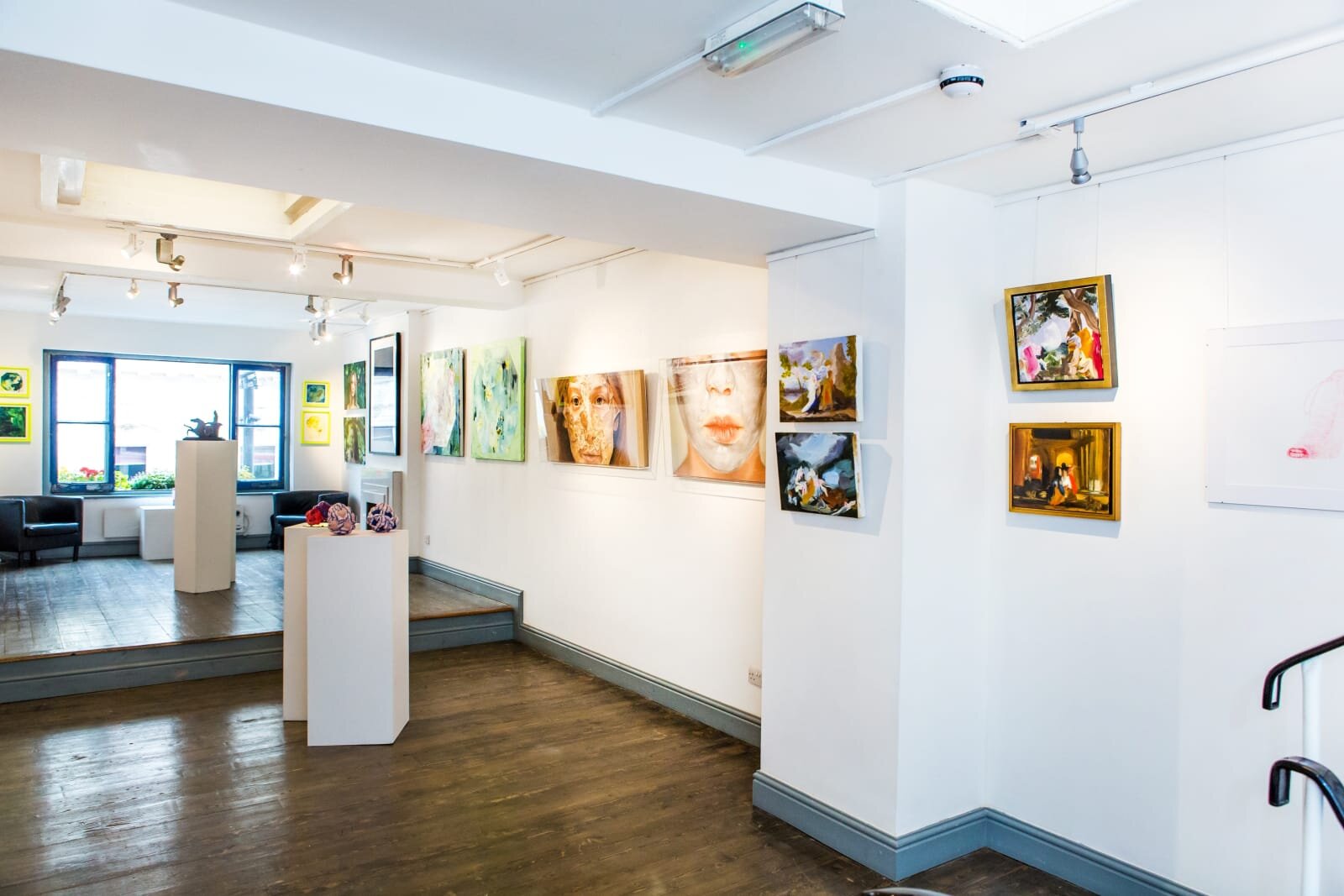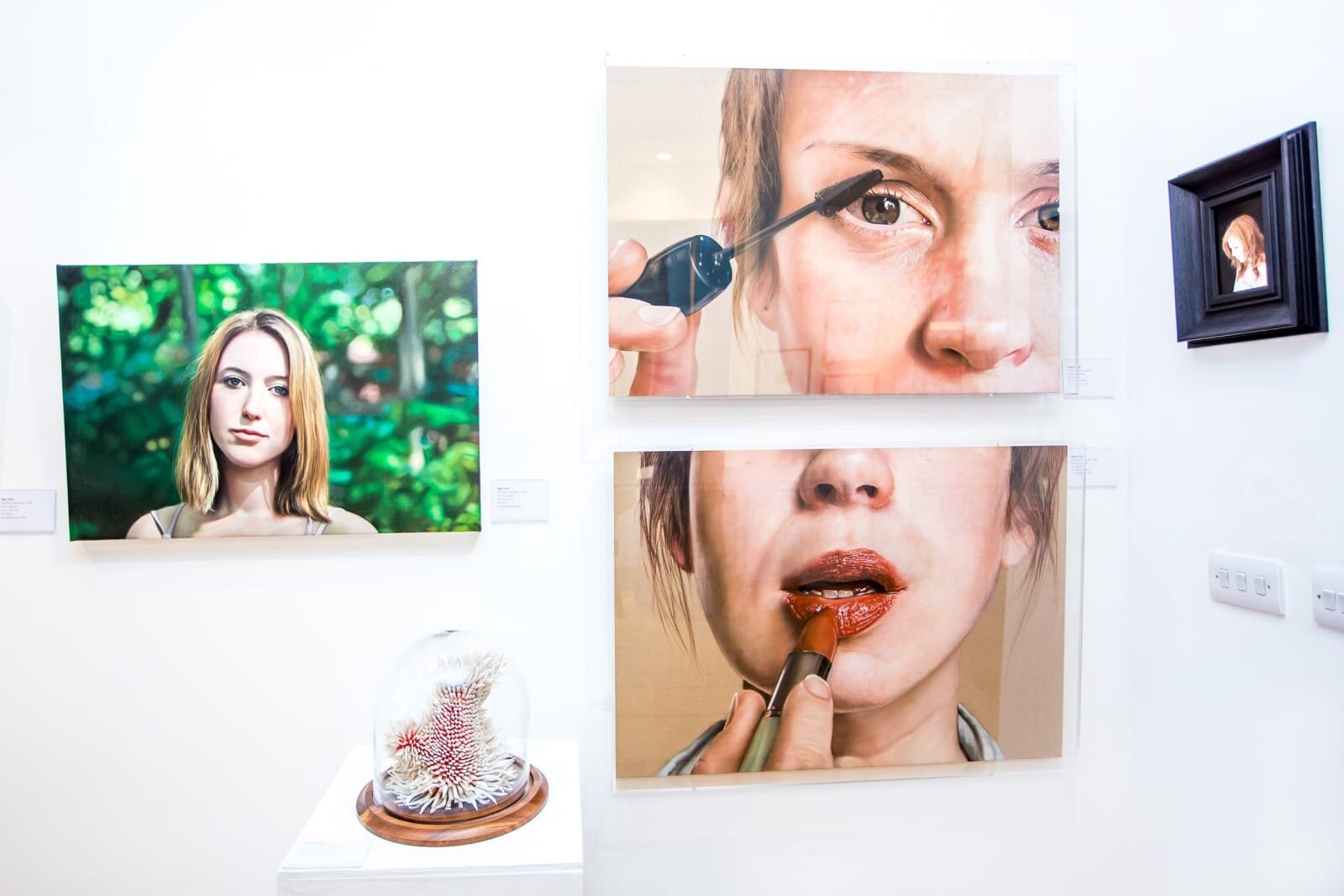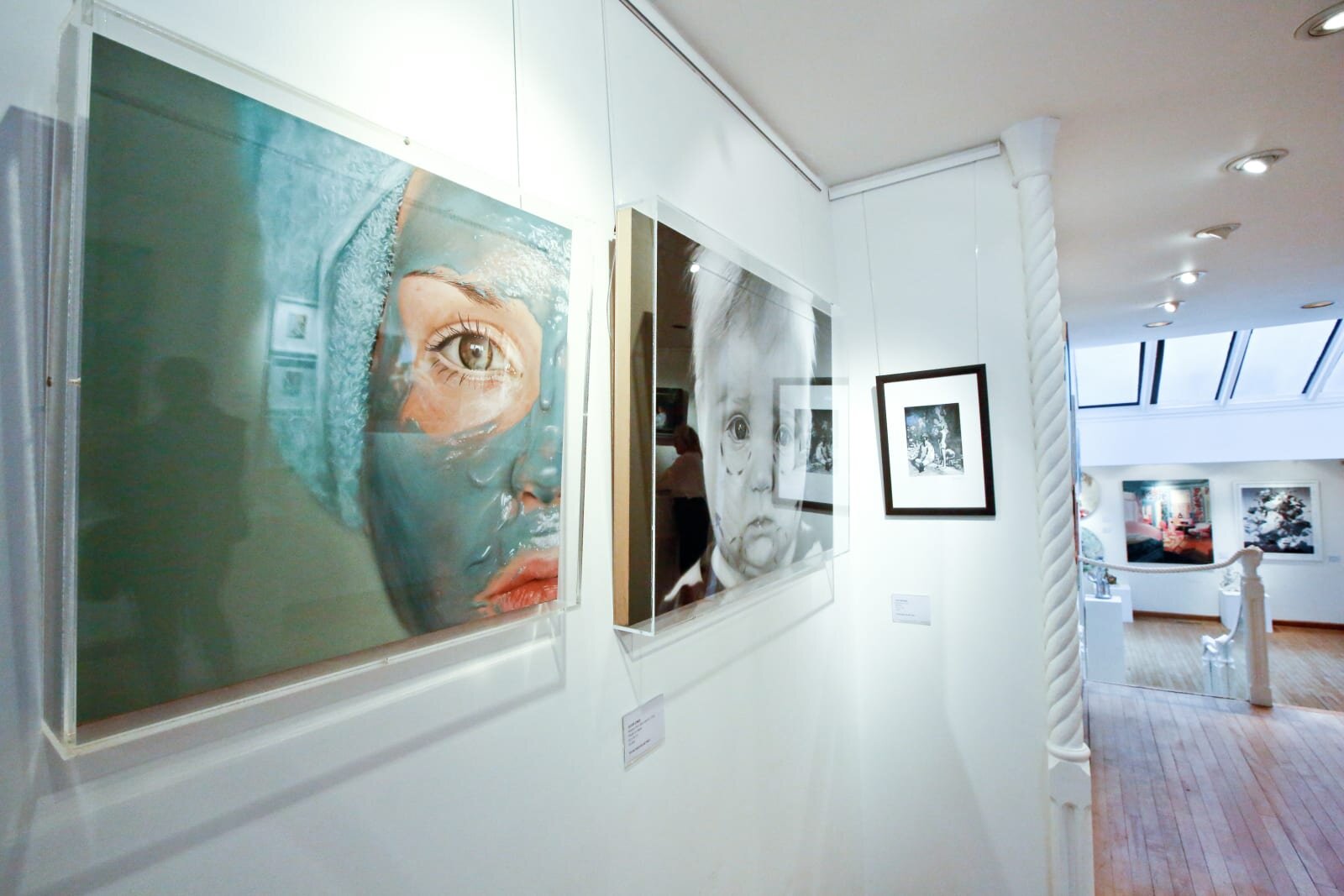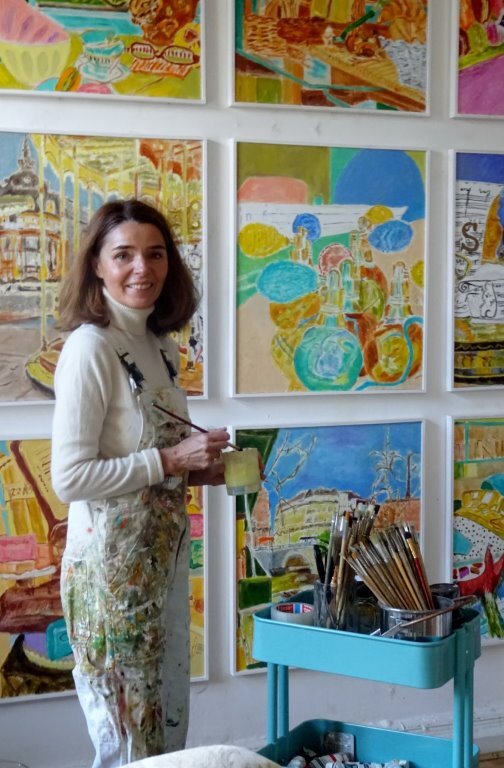1. Describe your experience of professional training and how does it continue to inform your process and productivity?
Coming from a traditional artistic practice during my BFA at Tehran University of Art in Iran to my MFA degree at the School of the Museum of Fine Arts/Tufts University with the focus on the concept, I’ve been challenged in both technical and theoretical aspects of the art-making process. My drawings on paper and casts of my body, as well as textile and sculptural installations, represent a non- Western aesthetics of pleasure and beauty. Working at the intersections of drawing, sculpture, and textile design, I locate my work in a feminist response to Edward Said’s “Orientalism”: ideas of womanhood in the post-colonial world and the
post-revolution generation in Iran intertwine with conflicts at the borders of tradition and (post-)modernity. Meanwhile, I pursue beauty and realism in contemporary art by deploying formality, virtuosity, and delicacy, connecting my work aesthetically to art of the past.
Azita Moradkhani
2. What is your average day like both in the studio and out and about?
I spend an average of six hours a day in my studio. It usually starts with my admin work, research, and reviewing my visual resources for the current project. Then, I start my drawing with a selected piece (I usually work on multiple drawings at the same time) for three to four hours. The rest of the time will be spent on experimental techniques (embroidery, cyanotype printing, dying fabric, drawing on fabric, and tailoring) for my new project. Living in the current visual era bombarded with constant (both welcoming and unwelcoming) images, I try to manage my exposure to images relative to my work. However, due the COVID-19 outbreak, everything, including my access to technical facilities, exposure of my work, studio space, and connection to art professionals have been affected over the last several months.
Azita Moradkhani, Not Too Far Away (Victorious Secrets), 2016
3. Can you speak a little more about your work Not Too Far Away (Victorious Secrets) as this was the piece that won the Young Masters Art Prize and Young Masters Emerging Woman Art Prize in 2017?
The female body, and its exposure to differing social norms, is central to my work. Through my work, I examine the experience of finding ourselves insecure in our own bodies. In my series of colored pencil drawings, “Victorious Secrets”, unexpected images incorporated in intimate apparel intend to bring humor, surprise, and a shock of recognition. Layers of shadowy images reveal stories, with the hope of leaving a mark on the audience. Two worlds–my birthplace and my current home–live alongside each other in my work, joining intimately at a single point.
In “Not Too Far Away,” I use a photograph of migrants arriving in Greece on a Turkish boat in 2015. This piece was inspired by the painting “The Raft of the Medusa” by Theodore Gericault: the figure at the top right side, holding a piece of fabric, is repeated in the figure of a child at the top left side of the image in my drawing who also holds a piece of cloth. Both of these images show immigrants drifting on the sea, risking their vulnerable bodies for the hope of a better future.
4. Can you share a little about your current work in progress?
Over the last few years, my process of making art has transitioned from drawings to more complex layers of body casts that allow the work to interact with the audience beyond the surface. Related to my own roots in Persian textile and inspired by the work of artists whom I admire–such as Louise Bourgeois, who says, "Clothing is a metaphor of the years that pass.
For me fashion is the experience of living in this dress, in these shoes"–I am taking my practice further and transferring my drawings onto actual lingerie fabric. In blurring the borders between artistic disciplines in my studio practice, I hope to interrogate the cultural and historical ideas shaping my work. Using these new images and materials emphasizes the marks of history and memory on the body and its accoutrements. My new body of work seeks a new perspective on wearable art, creating lingerie across the gender spectrum for different identities–an artistic vision that can challenge the public perspective of the most intimate clothing as a personal ideology rather than just a piece of cloth.
Right Image: Labor II, colored pencil, 22 x30 inches, 2020
Left Image: Labor, colored pencil, 22 x 30 inches, 202
5. Are there any particular people, places or things that serve as points of inspiration for you and your work?
Growing up in Tehran, I was exposed to Persian art and culture, as well as recent Iranian politics, and that double exposure increased my sensitivity to the dynamics of vulnerability and violence that I explore in my work and art-making process. A sense of delicacy and colorful patterns connect my work aesthetically to Persian art; from childhood I was surrounded by intricate Persian carpets and textile designs. For me, the patterns are traumas that repeat unconsciously regardless of their aesthetic aspects and the pleasure leads to pain and feeling overwhelmed in my drawings.
Meanwhile, Wangechi Mutu, Shirin Neshat, and Greer Lankton are some of the artists whose careers and work I admire. I’ve been impressed by the way Linkton connects her body’s experiences in her work, which results in a strong dialogue with the viewer about gender and sexuality. I also appreciate the way that Shirin Neshat uses the bodies of women to have conversations regarding women’s issues in Islamic countries and their connection to deeply cultural aspects of these societies. Moreover, I, like Wangechi Mutu, believe that "females carry the marks, language and nuances of their culture more than the male. Anything that is desired or despised is always placed on the female body.”
Moreover, over the past few years, I have participated in such residencies as Yaddo, Virginia C enter for the Creative Arts (VCCA), McColl Center For Art+Innovation, and Massachusetts Museum of Contemporary Art (MASS MoCA). The exposure to different communities of artists, dialogue with arts professionals, and lecturing at universities have helped me branch my ideas out in more fulfilling directions.
6. What do you wish for people to encounter or experience when they take in your work? What are some of the statements people have made about your work that have resonated or stuck with you?
I am fascinated by the stories that I hear of how viewers were surprised upon finding the shadowy images in the drawings of lingerie and how people (from across the gender spectrum) create a connection with an uncomfortable object such as lingerie in a public presentation. My drawings are very subtle and detailed, which requires the audience to get very close to the pieces to see the hidden stories of ghostly images. I use an aesthetic of pleasure to seduce the viewer, who finds, upon closer inspection, through the layers of colored pencil, past the details of lace and filigree, disruptive iconography narrating inherited histories of nation and belief.
Azita Moradkhani
7. When and what was your first interaction with art and how did this influence you in becoming an artist?
My father’s oil paintings were my first memorable encounter with visual art. He is an artist and he used to paint at home after a long day working a glass workshop, supervising workers to cut and design glass for installation in huge commercial buildings. Painting is his passion and he used to have a corner of the living room where he set up his easel to start painting right after dinner. Having a father who is an artist himself was a huge inspiration for me through my whole life.
In Tehran, from childhood, I was surrounded and impressed by beautiful Persian carpets, colorful textile designs, as well as Persian miniatures with their colorful details and the art of storytelling through images which can be seen in my work.
8. How has COVID-19 and the lockdown affected your day to day life and approach to creative work?
During my last residency at the McColl Center For Art+Innovation in North Carolina, before it shut down because of the COVID-19 outbreak, I was solidifying ideas for images on lingerie, connecting with intimate apparel designers, and learning to fabricate clothing for art exhibitions through exploring techniques such as cyanotype, dyeing, and embroidery, alongside advanced tools like a digital sewing machine. In March 2020, my residency was shut down and I lost all my access to the technical equipment and such resources as a printmaking studio, embroidery workshop, textile workshops, and studio space. I also lost my connection to intimate apparel designers/companies that were provided by the institution as resources/guidelines for my project. Following that, my runway show at the McColl Gala on April 3rd was canceled and consequently, my whole project was stopped. Currently, I am focusing on research and experimenting new techniques that are possible in my home-studio. My research includes learning the fashion history of intimate lingerie in the 20th century; creating designs for wearable art pieces in connection to the contemporary fashion of intimate apparel. These days, I am learning new techniques in textile design and printmaking; advancing my skills in embroidery, dyeing fabric, and tailoring; and determining the best materials for fabrication.




